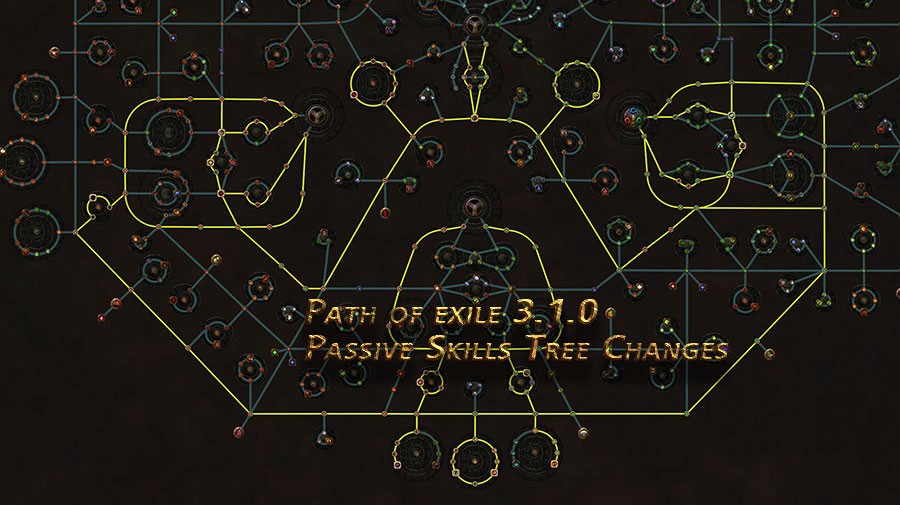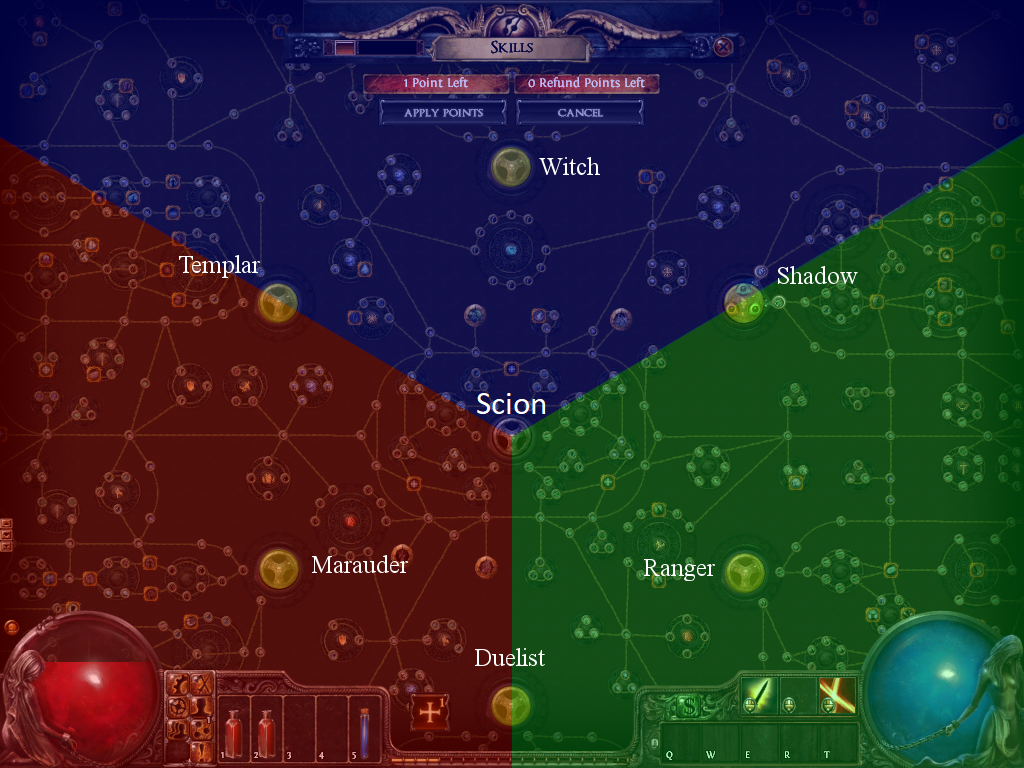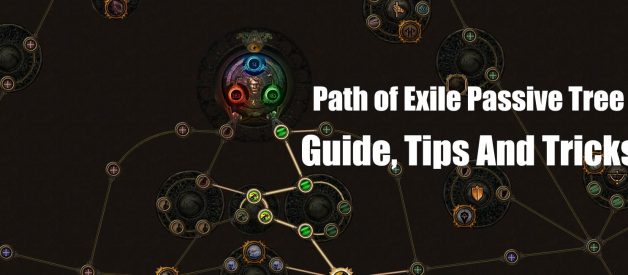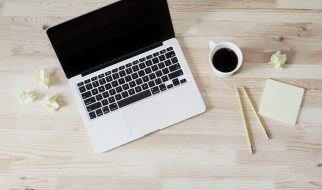 Path of Exile
Path of Exile
When you enter the Path of Exile for the first time, what impresses you most is the huge passive skill tree system. Therefore, we have shared the Path of Exile Passive Skill Tree guide, tips, and tricks here to help you understand the passive skill tree system in depth.
What?s the Path of Exile Passive Skill Tree and How Does It Work?
Path of Exile passive skill tree is a vast web of as many as 1384 skills. The strength of a single talent bonus can be visually distinguished from the size of the icon shape. The smallest talent points provide some basic bonus attributes for the character; medium-sized talent points give some enhanced composite effects and attributes; the largest talent points provide some effects that directly affect the professional characteristics and character positioning. Players can create unique character genres through the choice of the talent system and some unique skills and equipment.
In addition, there are some jewelry slots in the PoE passive tree, and some of the jewelry picked up during the game can be placed in these slots.
On the other hand, the PoE passive tree also gives players the opportunity to create a ?new career.?
What?s New with the Passive Skill Tree?
The changes made to the Passive Skill Tree is based on Cluster Jewels, which are to be placed in the outermost sockets. This allows for deeper nesting with additional sockets, as well as adding craftable mods and more.
New Passive Skill Tree does work on a much larger scale however, giving new keystones, passives, notables, and more. This can really help players out in the long run, opening the door for far more options for builds.
Path of Exile 3.1.0 Passive Skills Tree Changes
 Path of Exile Passive Tree Changes
Path of Exile Passive Tree Changes
– Vaal Pact has been significantly reworked. It no longer grants instantaneous Life Leech, and as an alternative doubles the rate of one?s Life Leech also as your maximum Life Leech price. It has been moved to the Duelist?s location.
– The passive skills behind Mind over Matter now grant 10% increased Mana (down from 12%) around the non-notables, and 30% elevated Mana (down from 40%) and 40 added mana (down from 100) around the notable.
– The Hematophagy notable now grants 3% of maximum Life per second to Maximum Leech Rate (down from 5%).
– The Vitality Void notable now grants 3% of maximum Life per second to Maximum Leech Rate (down from 5%).
– Passive skills that previously granted increased Melee Physical Damage though holding a Shield now allow increased Physical Attack Damage when holding a Shield (it is no longer restricted to Melee).
– A lot of passive skills that previously only supplied defensive bonuses though employing a shield now also grant increased physical attack damage and harm with ailments while holding a shield.
– Removed one of the passive skills leading to the Ash, Frost, and Storm notable (near the Scion).
How to Build Path of Exile Skill Tree?
If you?re making up your own build passive tree, be sure you understand these features of the passive skill tree:
Starting Areas: Your character starts with points in a certain area, but you can also feel free to work towards other classes? nodes.
Paths: Much of the skill three consists of paths that offer a +10 bonus to one of the three core stats. Try to pick up the stat you need as you work towards other features on the tree.
Clusters: Groups of similarly themed nodes, often with an icon in the center of them. Clusters come in many sizes and often have a gold-colored skill that is especially powerful and desirable.
Keystones: Unique nodes that change the balance of game mechanics for your character. Each one has an amazing buff but also a significant penalty to consider.
Each class starts on a different part of the tree.
Witch ? Has access to mostly intelligence and energy shield passive nodes at early levels (1?30)Templar ? Has access to a mix of strength and intelligence passive nodes at early levels (1?30)Marauder ? Has access to strength and life passive nodes at early levels (1?30)Duelist ? Has access to a mix of strength and dexterity passive nodes at early levels (1?30)Ranger ? Has access to dexterity and evasion passive nodes at early levels (1?30)Shadow ? Has access to a mix of intelligence and dexterity passive nodes at early levels (1?30)Scion ? It starts in the middle and can have access to any side of the skill tree. You can even start on 2 different paths if you choose to.
 Passive Skill Tree
Passive Skill Tree
When you level up each time, you gain a skill point. You also can get additional skill points from optional quests from the story mode. Over the playthrough, characters receive 22 passive skill points (up to 24 including the bandit quest rewards) and 20 skill refund points. So the total skill points you can have in the game are 123 at level 100.
Now when you are building your character, you will want to plan your skill points up to level 90, which is 113 skill points if you completed all the side quests. Anything after that is luxury and most good builds can be completed at around 90.
When planning your tree, you also need to take into account the items you plan to use as it will alter your path.
The skill tree is versatile and allows you to balance offense/defense. Your playstyle will dictate how you go about your skill tree.
If you want to adjust your passive build during gameplay, there are Passive Skill Refund points available from quests or relatively rare items in the game that can be found or traded for.
Fixing mistakes with a character build or improving small-medium sized aspects is relatively easy, but players who want to try substantially divergent character builds are encouraged to play a new character through the game, organically leveling it up rather than just respeccing into it.
Tip and Tricks for Building Path of Exile Skill Tree
PoE passive tree is focused on 3 types of ability (strength, intelligence, and dexterity) to strengthen the skill of 7 characters, which are duelist, templar, witch, ranger, marauder, shadow, and scion. Per 10 strength increases 2% melee physical damage and 5 maximum life, per 10 intelligence adds 5 additional mana and 2% maximum energy shield, per 10 dexterity increases 20 additional accuracies and 2% evasion.
Step 1, You need to consider is the type of character, the starting character will influence your following choices because you need to fill out the tree according to the main skill or PoE items you want to build, figure out what style you are going to play and what keystones they may need.
Step 2, You will want to grab as many percent life or energy shield nodes, keep in mind that enough life is the most important thing, no matter you against the monster or complete other missions, the advice to shoot for is around 180 to 200 percent increase max life or 200 to 250 percent max energy shield.
Step 3, As well as the last step, is to simply fill out the rest of the points into offensive nodes, dual sockets or temporary resistance node, for a starting character, it is recommended to pick a strength-based class such as the duelist, templar or marauder on the left side of the PoE passive tree because life-based characters are the most straightforward and cheap characters to link, you can save the PoE currency and have the access to get the most amount of life nodes in the skill tree.
Also, don?t forget to PoE currency buy from us, our Eznpc.com is a PoE currency market, you can get help from us when you play games.


